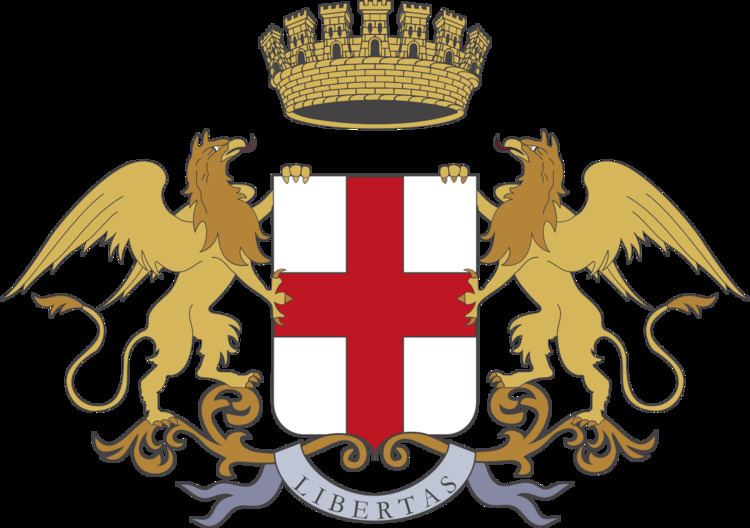Preceded by Position established | Name Simone Boccanegra | |
 | ||
Preceded by Position temporarily vacant | ||
Political party PopolaniGhibelline | ||
Lajos Miller & Veronika Kincses "Duet Doge/Amelia" Simone Boccanegra
Simone Boccanegra (Ligurian: Scimon Boccaneigra, Italian: Simone Boccanegra; died 1363) was the first Doge of Genoa. He became doge in 1339, but was ousted from power six years later. He regained the position in 1356, retaining it until his death in 1363.
Contents
- Lajos Miller Veronika Kincses Duet DogeAmelia Simone Boccanegra
- G Verdi Simone Boccanegra Amelia Gabriele Doge Scena e Terzetto Finale II
- Doge
- Resignation and death
- In culture
- References
His story was popularized by Antonio García Gutiérrez's 1843 play Simón Bocanegra and Giuseppe Verdi's 1857 opera Simon Boccanegra. Note the spellings.
G. Verdi: Simone Boccanegra - Amelia Gabriele Doge Scena e Terzetto Finale II
Doge
Boccanegra was elected doge for life on September 24, 1339, as the candidate of the "popular" Ghibelline faction. Boccanegra was opposed by the aristocratic Guelf faction, representing the old mercantile patriciate, which his first actions excluded from public life. With the old patriciate excluded from power, a new class of mercantile houses arose: Adorno, Guarco, Fregoso, and Montaldo.
During Boccanegra's dogate, Genoese control was extended the length of both the French and Italian Rivieras, with the exception of the Grimaldi holdings in Monaco and Ventimiglia, and Genoese galleys went to the aid of Alfonso XI of Castile in his struggles against the Saracens.
There were constant conspiracies and attempts against Boccanegra's life from the outset. (The first conspirator's head rolled on December 20, 1339.) This led to the establishment of a bodyguard of 103 mounted soldiers. For Boccanegra's security these were drawn from Pisa, the inveterate enemy of Genoa, where, however, Simone's brother Niccolò was "captain of the people", their mother having been a Pisan aristocrat.
Resignation and death
Boccanegra was forced to resign his office at a public meeting he had called, December 23, 1344. He was succeeded by Giovanni I di Murta, who died in early January 1350 and then by Giovanni II Valente, who ruled as chief magistrate, until Boccanegra regained power in 1356.
Boccanegra died in 1363, possibly having been poisoned by agents of his enemies.
In culture
The humanist poet Petrarch wrote letters to the people of Genoa and to the doge of Venice appealing to them to end their fratricidal wars and find a common aim. These letters were among Verdi's inspirations for the revision of the opera in 1881.
Simone Boccanegra's tomb in the no longer extant church of San Francesco in Castelletto was decorated with a remarkable funeral sculpture, depicting him as if lying in state with extraordinary realism in his features. This sculpture is now in the Museum of Sant'Agostino.
